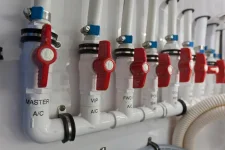q240z
Legendary Member
- Joined
- Nov 12, 2008
- Messages
- 1,678
- Status
- FRIEND
- Hatteras Model
- Not Currently A Hatteras Owner
I'm thinking ahead to the raw water plumbing for the self-contained AC units I'll install in my Chris Craft Roamer refit and am hoping for some suggestions. Since this is an aluminum boat, I'm minimizing copper and bronze inside the boat as much as possible. So even though I've got tons of bronze plumbing bits from previous boats, I want to avoid using it in the Roamer.
My seacocks will be Marelon, as are the tailpieces/hose barbs. But Forespar doesn't make plumbing parts that I can fashion into a manifold to split the raw water supply from 1" to three 5/8" hose barbs. PVC is out of the question (I think) even though the manifold will be above the waterline. I could weld up something out of stainless tube, but if there's something off the shelf, that'd probably be my preference.
Thoughts?
My seacocks will be Marelon, as are the tailpieces/hose barbs. But Forespar doesn't make plumbing parts that I can fashion into a manifold to split the raw water supply from 1" to three 5/8" hose barbs. PVC is out of the question (I think) even though the manifold will be above the waterline. I could weld up something out of stainless tube, but if there's something off the shelf, that'd probably be my preference.
Thoughts?


